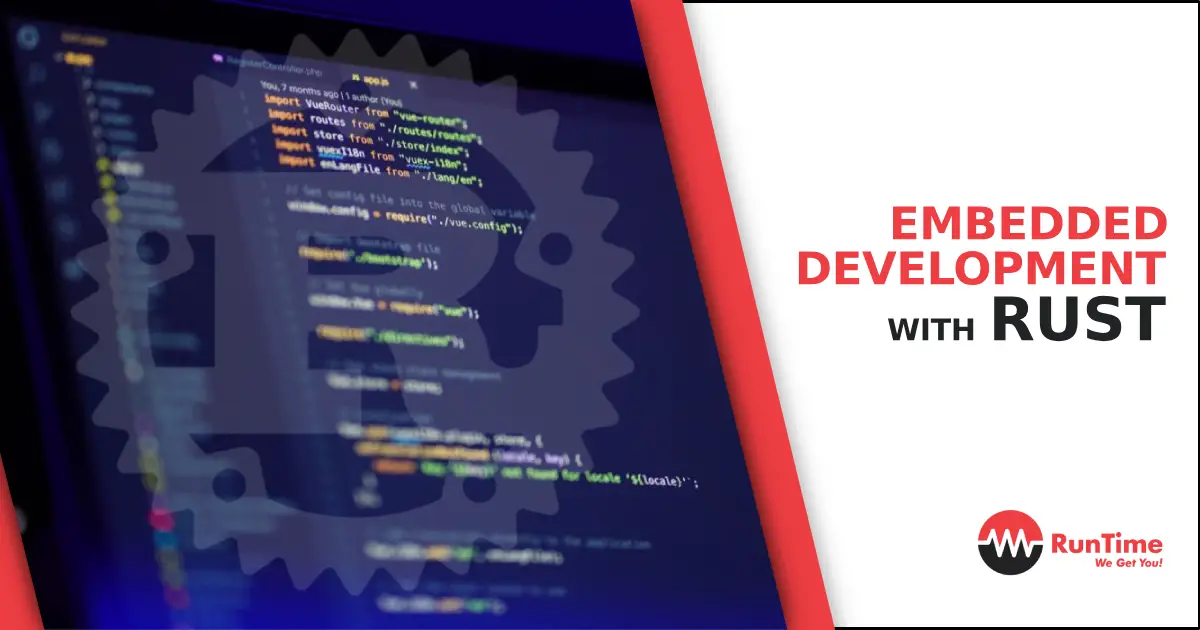Rust, a modern programming language focused on safety and performance, is increasingly becoming the language of choice for embedded development. Its unique features, such as strong static analysis and flexible memory management, make it well-suited for embedded systems.
Why Use Rust for Embedded Development?
Rust offers several key features that make it an excellent choice for embedded development. These features work together to enable developers to create efficient, reliable, and secure embedded systems.
Powerful Static Analysis
Rust’s strong type system and powerful static analysis help prevent common programming errors, such as null pointer dereferences and buffer overflows. This leads to safer and more reliable code, which is especially crucial in embedded systems where errors can lead to significant consequences.
Flexible Memory Management
One of the core strengths of Rust is its unique approach to memory management. The language enforces strict ownership rules, which eliminate the need for garbage collection and minimize the likelihood of memory leaks. This results in more efficient memory utilization, a crucial aspect for resource-constrained embedded systems.
Fearless Concurrency
Concurrency is often essential in embedded systems to manage multiple tasks simultaneously. Rust’s focus on safety extends to concurrent programming, enabling developers to write concurrent code without the risk of data races and other synchronization issues. This is particularly beneficial in embedded applications, where efficient multitasking is a key requirement.
Interoperability with Other Languages
Embedded systems often involve a mix of programming languages, such as C and C++, for different components. Rust’s interoperability with these languages allows developers to gradually introduce Rust into existing projects or leverage existing libraries, facilitating a smoother transition to the language and enabling the benefits of Rust to be realized in a wider range of contexts.
Portability Across Different Platforms
Embedded systems are diverse, spanning various hardware platforms and operating systems. Rust’s portability ensures that code written in Rust can be easily compiled and run on different platforms, making it an ideal choice for developers working with a wide range of embedded systems.
Overall, Rust’s unique combination of safety, performance, and flexibility makes it an attractive option for embedded development. With its growing adoption and strong community support, Rust is well on its way to becoming a leading choice for developers in the embedded space.
Getting Started with Rust for Embedded Development
To begin your journey in embedded development with Rust, it is essential to set up the right development environment and familiarize yourself with Rust’s embedded ecosystem. In this section, we will guide you through the initial steps to get started with Rust in the embedded context.
Setting up the Development Environment
Before diving into embedded development with Rust, you need to set up your development environment. This includes installing the Rust compiler and other essential tools, such as Cargo, Rust’s package manager and build tool. Additionally, you may need to configure your environment for cross-compilation to target different embedded platforms.
Using Rust’s Embedded Ecosystem
Once your development environment is set up, you can start exploring Rust’s embedded ecosystem. This ecosystem consists of libraries and frameworks specifically designed for embedded development
Relevant Resources for Learning Rust in the Embedded Context
There are several resources available to help you learn Rust for embedded development. These resources provide in-depth information on Rust’s features, best practices, and hands-on examples tailored to the embedded domain. Some key resources include:
- The Discovery book – An introductory guide to embedded development with Rust, covering essential concepts and practical examples.
- The Embedded Rust book – A comprehensive resource that delves deeper into Rust’s embedded capabilities, providing detailed explanations and advanced techniques for experienced developers.
- The Embedonomicon – A specialized guide that focuses on the nitty-gritty details of embedded Rust development, such as linking, startup code, and hardware-specific considerations.
Rust Embedded Development Workflow
Developing embedded systems with Rust involves following a workflow that ensures efficient project setup, code organization, cross-compilation, and testing. In this section, we will explore each step of this workflow in detail.
Project Setup and Configuration
The first step in the Rust embedded development workflow is setting up your project. This involves creating a new Rust project using Cargo, configuring the project for embedded development, and adding the necessary dependencies. You may also need to set up your development environment for cross-compilation, targeting different embedded platforms.
Writing and Organizing Embedded Rust Code
Once your project is set up, you can start writing your embedded Rust code. It is crucial to organize your code efficiently, separating concerns and following Rust’s best practices for embedded systems. This may involve creating modules for different components and using Rust’s powerful abstractions, such as traits and generics, to write reusable code that can be easily adapted to various hardware platforms.
Cross-Compiling for the Target Platform
After writing your embedded Rust code, the next step is to cross-compile it for your target platform. This involves configuring your project to build with the appropriate target triple, which specifies the hardware and operating system you are targeting. You may also need to link your project with platform-specific libraries, such as hardware abstraction layers, to ensure compatibility with your target platform.
Debugging and Testing Embedded Rust Applications
Debugging and testing are critical aspects of the Rust embedded development workflow. Debugging helps you identify and fix issues in your code, while testing ensures that your application behaves as expected on the target hardware. To debug and test your embedded Rust applications, you can use a combination of tools, such as hardware debuggers, emulators, and unit testing frameworks, to ensure the reliability and performance of your embedded system.
Integrating Rust with Existing Embedded Systems
Integrating Rust into existing embedded projects can offer significant benefits, such as increased safety, performance, and concurrency. In this section, we will discuss strategies for incorporating Rust into existing embedded systems, interfacing Rust with hardware and software components written in other languages, and assessing the trade-offs and benefits of using Rust alongside other languages.
Strategies for Incorporating Rust into Existing Embedded Projects
Incorporating Rust into existing embedded projects can be achieved through various strategies. One approach is to gradually introduce Rust into specific components of the system, such as performance-critical sections, safety-critical modules, or areas that require concurrency. This allows developers to leverage Rust’s benefits in targeted areas while minimizing the overall impact on the existing codebase. Another strategy is to refactor the entire system in Rust incrementally, replacing components one by one and ensuring seamless integration with the remaining codebase.
Interfacing Rust with Hardware and Software Components Written in Other Languages
As embedded systems often involve a mix of programming languages, it is crucial to ensure smooth interfacing between Rust and other languages used in the project. Rust’s interoperability with languages like C and C++ enables developers to easily interface Rust code with existing hardware and software components. This can be achieved through Foreign Function Interfaces (FFI), which allow Rust code to call functions written in other languages and vice versa.
Assessing the Trade-offs and Benefits of Using Rust Alongside Other Languages
Integrating Rust into existing embedded systems can offer various benefits, such as improved safety, performance, and concurrency. However, it is essential to carefully assess the trade-offs associated with using Rust alongside other languages. These trade-offs may include increased complexity, potential performance overhead, and the need to maintain code in multiple languages.
Conclusion
Rust offers numerous advantages for embedded development, including powerful static analysis, flexible memory management, fearless concurrency, interoperability, and portability across different platforms. By using Rust in embedded systems, developers can build more reliable, secure, and efficient applications, harnessing the unique features and benefits of the language.
With its growing popularity and strong community support, Rust is well-positioned to become a leading choice for embedded development. We encourage readers to explore Rust and its potential in the embedded systems domain, leveraging the wealth of resources and community-driven ecosystem to enhance their projects and advance their skills in this exciting field.
Hire the Best Engineers with RunTime Recruitment
If you’re searching for highly skilled engineers worldwide, our expert team of engineers-turned-recruiters is here to help you. We offer in-depth knowledge of technical recruiting in the engineering industry to make the sourcing process much easier for you.
On the other hand, if you’re an engineer looking for new opportunities, RunTime Recruitment’s job site is the perfect place to find job vacancies.









